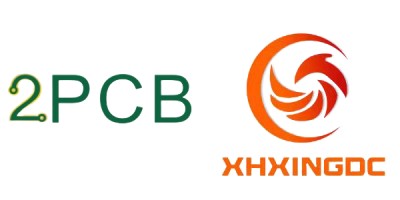Everyone has their own little habits, whether in life or work. Sometimes, some small habits are harmless, but some bad habits need to be eliminated. As a hardware engineer, you must get rid of the following bad habits~
7 Bad Habits Hardware Engineers Need to Break
1. The PCB design requirements of this board are not high, just use thinner lines and automatically lay them out.
Comment: Automatic wiring will inevitably occupy a larger PCB area and produce many times more vias than manual wiring. For products with large batches, in addition to business factors, the factors that PCB manufacturers consider when reducing prices are line width and throughput. The number of holes affects the yield of PCB and the number of drill bits consumed respectively, which saves the supplier’s cost and provides a reason for price reduction.
2. The 100M data bus should be considered a high-frequency signal. As for the clock signal frequency, which is only 8K, it is not a big problem.
Comment: The value of the data bus is generally sampled by an edge of the control signal or clock signal. As long as sufficient setup time and hold time are maintained for this edge, it does not matter if there is interference or overshoot outside this range. How much impact will it have (of course, it is best not to exceed the maximum voltage value that the chip can withstand), but no matter how low the frequency of the clock signal is (in fact, the spectrum range is very wide), its edge is critical, and it must be ensured Monotonicity, and the jump time needs to be within a certain range.
3. To ensure a clean power supply, the more decoupling capacitors the better.
Comments: Generally speaking, the more decoupling capacitors, the more stable the power supply will be. However, too many decoupling capacitors also have disadvantages: wasteful cost, difficult wiring, too large power-on surge current, etc. The key to designing a decoupling capacitor is to select the right capacity and place it in the right place. General chip manuals have design references for decoupling capacitors. It is best to follow the manual.
4. These signals have been simulated and there is absolutely no problem.
Comment: The simulation model cannot be exactly the same as the real thing. Even the real objects processed in different batches are different, let alone the model. Besides, actual situations vary widely, and simulation cannot exhaust all possibilities, especially crosstalk. There was a lesson learned that a certain board only has packets of a specific length and is very prone to packet loss. The final reason is that the value of the length field is 0xFF. When this data appears on the bus, it interferes with the adjacent WE signal and prevents writing into the RAM. . Other data will also cause interference to WE, but the interference is within an acceptable range. However, when the 8-bit bus changes from 0 to 1 at the same time, nearby signals cannot withstand it. The conclusion is that the simulation results are for reference only and sufficient margin should be left.
5. Why are these signals overshooting? As long as it matches well, it can be eliminated
Comment: Except for a few specific signals (such as 100BASE-T, CML), there is overshoot. As long as it is not very large, it does not necessarily need to be matched. Even if it matches, it does not have to be the best match. For example, the output impedance of TTL is less than 50 ohms, and some are even 20 ohms. If such a large matching resistor is used, the current will be very large, the power consumption will be unacceptable, and the signal amplitude will be too small to be used. Besides, the output impedance of general signals when outputting high level and outputting low level is not the same, and there is no way to completely match them. Therefore, the matching of TTL, LVDS, 422 and other signals only needs to ensure that the overshoot is acceptable.
6. Our system requirements are so high. All chips including MEM, CPU, FPGA, etc. must choose the fastest ones.
Comment: In a high-speed system, not every part works at high speed. Every time the device speed increases by one level, the price almost doubles. In addition, it also brings a huge negative impact on signal integrity issues.
7. What color should I choose for the indicator lights on the panel? I think blue is more special, so I’ll choose it.
Comments: Other colors such as red, green, yellow, and orange have been mature for decades regardless of the size of the package (below 5MM), and the price is generally less than 50 cents. However, blue is something that was only invented in the past three or four years. The technology maturity and supply stability are poor, but the price is four to five times more expensive. Currently, blue indicator lights are only used in situations where other colors cannot be substituted, such as displaying video signals.

